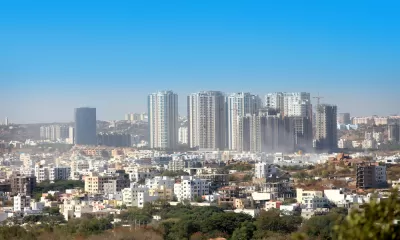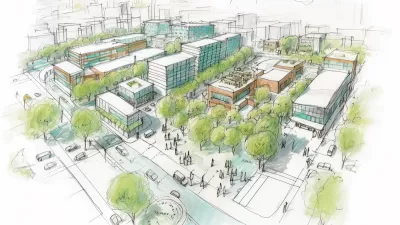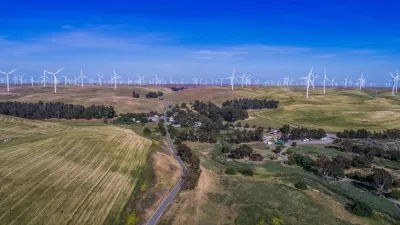Andhra Pradesh is being split in two, and India is building a new capital for the portion of the state that will keep the Andhra name. The city will reside on what was banana fields and other farmland.

Andhra Pradesh, a state located on the southeastern coast of India, will build a new capital city called Amravati. "By 2035, they projected, [Amravati] would be home to 11 million people and cover 3,322 square miles," Rollo Romig reports for California Sunday. This city will replace Hyderabad, the old capital lost by the state when it was split to create Telangana.
Plans for Amaravati are ambitious and detailed. Romig was shown a model of the coming city that sits on ground that will one day been in Amaravati's center. "The spot we were standing on — which until recently had been a banana farm — lay smack in the middle of the projected finance city," Rollig writes. The city plan has its skeptics: It will need a great deal of capital to build all the infrastructure local officials have planned, and timing the growth of the city may be tricky. If businesses move in too quickly they'll have no customers, but if they're too slow the people who come to the city won't have access to the services they need.
"It’s telling that all the major holidays in the region revolve around farming — precisely the aspect of life that the new city seeks to erase," Rollig observes. Still, the rapidly urbanizing country will see its cities grow somewhere, Andhra Pradesh's officials hope that somewhere is in the hot and fertile land they've carved out for Amravati.
FULL STORY: Urban Dreams

Planetizen Federal Action Tracker
A weekly monitor of how Trump’s orders and actions are impacting planners and planning in America.

Restaurant Patios Were a Pandemic Win — Why Were They so Hard to Keep?
Social distancing requirements and changes in travel patterns prompted cities to pilot new uses for street and sidewalk space. Then it got complicated.

Map: Where Senate Republicans Want to Sell Your Public Lands
For public land advocates, the Senate Republicans’ proposal to sell millions of acres of public land in the West is “the biggest fight of their careers.”

Maui's Vacation Rental Debate Turns Ugly
Verbal attacks, misinformation campaigns and fistfights plague a high-stakes debate to convert thousands of vacation rentals into long-term housing.

San Francisco Suspends Traffic Calming Amidst Record Deaths
Citing “a challenging fiscal landscape,” the city will cease the program on the heels of 42 traffic deaths, including 24 pedestrians.

California Homeless Arrests, Citations Spike After Ruling
An investigation reveals that anti-homeless actions increased up to 500% after Grants Pass v. Johnson — even in cities claiming no policy change.
Urban Design for Planners 1: Software Tools
This six-course series explores essential urban design concepts using open source software and equips planners with the tools they need to participate fully in the urban design process.
Planning for Universal Design
Learn the tools for implementing Universal Design in planning regulations.
Heyer Gruel & Associates PA
JM Goldson LLC
Custer County Colorado
City of Camden Redevelopment Agency
City of Astoria
Transportation Research & Education Center (TREC) at Portland State University
Camden Redevelopment Agency
City of Claremont
Municipality of Princeton (NJ)





























